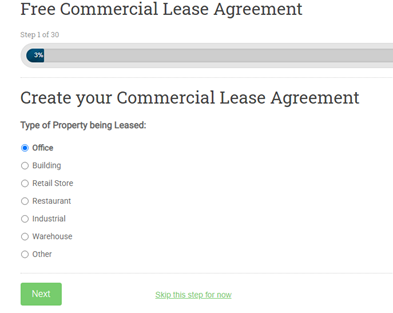We all know how difficult it is to find a good retail space. Location is essential as it relates to footfall and retail rents. But whether or not you are leasing space for your store or seeking to sublease the commercial property you own, here are five tips that will help you get the best deal on a retail lease.
What Is Commercial Retail Lease?
A commercial retail lease is a written contract between the owner or managers of a property and an individual or business that leases space. The company leasing the area, called the tenant, pays rent to the landlord to be allowed to occupy and use part of the real estate for commercial purposes. Commercial leases tend to be longer, like three years or so.
Types of Commercial Leases
There are four types of commercial leases:
A single net lease: You can expect only to pay utilities and property tax; the landlord will have to pay for maintenance, repairs, and insurance.
Double net lease: This is similar to a single net lease, but the tenant pays for property taxes and insurance.
Triple net lease: The tenant pays for all three costs: rent, taxes, and insurance.
Modified gross lease: The tenant and the landlord share the cost of repairs. They pay for property taxes, insurance, common area maintenance (CAM), and utilities. It’s called base rent.
You will have to negotiate flexibility with an independent landlord, but less so with a corporate one.
Getting the Best Retail Lease Terms
Have a Lawyer or Agent
Let either a lawyer or an agent review the lease agreement before signing it.The aim is to determine if it’s within your budget and ensure that your concerns have been addressed.
Be Prepared To Negotiate
Leases are negotiable, so don’t be afraid to push for the terms you want. However, there’s a limit to how much a landlord will concede, so don’t be too demanding.
Confirm the Square footage
Whether the space measurement is based on the size of the building, wall to wall, or outside grounds, there can be a lot of variation between measurements and available square footage listings.
The best way to determine your store size is to measure it yourself with a measuring tape or hire someone to do so for you. If you find the measurement is less than the landlord’s claim, you may negotiate a smaller rent amount.

Don’t Pay Base Rent
Landlords request for rent to be paid upfront in addition to monthly base rent payments. Many retailers take this because it makes their financial statements look better to shareholders and helps with cash flow, but doing is simply for the landlord’s good and not yours.
Instead of paying a fixed amount of dollars upfront, try negotiating a percentage of the retailer’s sales.
Search for Free Rent
If you’re a new business, search for a property that offers free rent. It will give you some breathing room to get your business up and to run without having to worry about monthly rent payments. Just be sure to have a solid plan in place to ensure you can take advantage of the free rent period and don’t fall behind on payments.
The leasing process can be stressful and confusing, but it doesn’t have to be. Your goal is to get the best terms possible for your retail space; we hope these five tips will help you make those goals a reality.
You may download a commercial lease agreement template for free here at our website and take information as you go through this lease negotiation process.